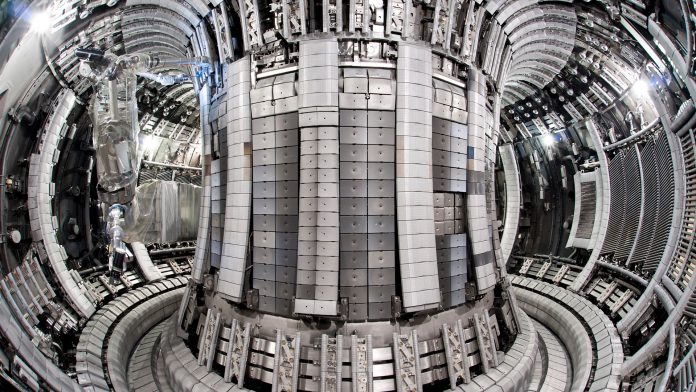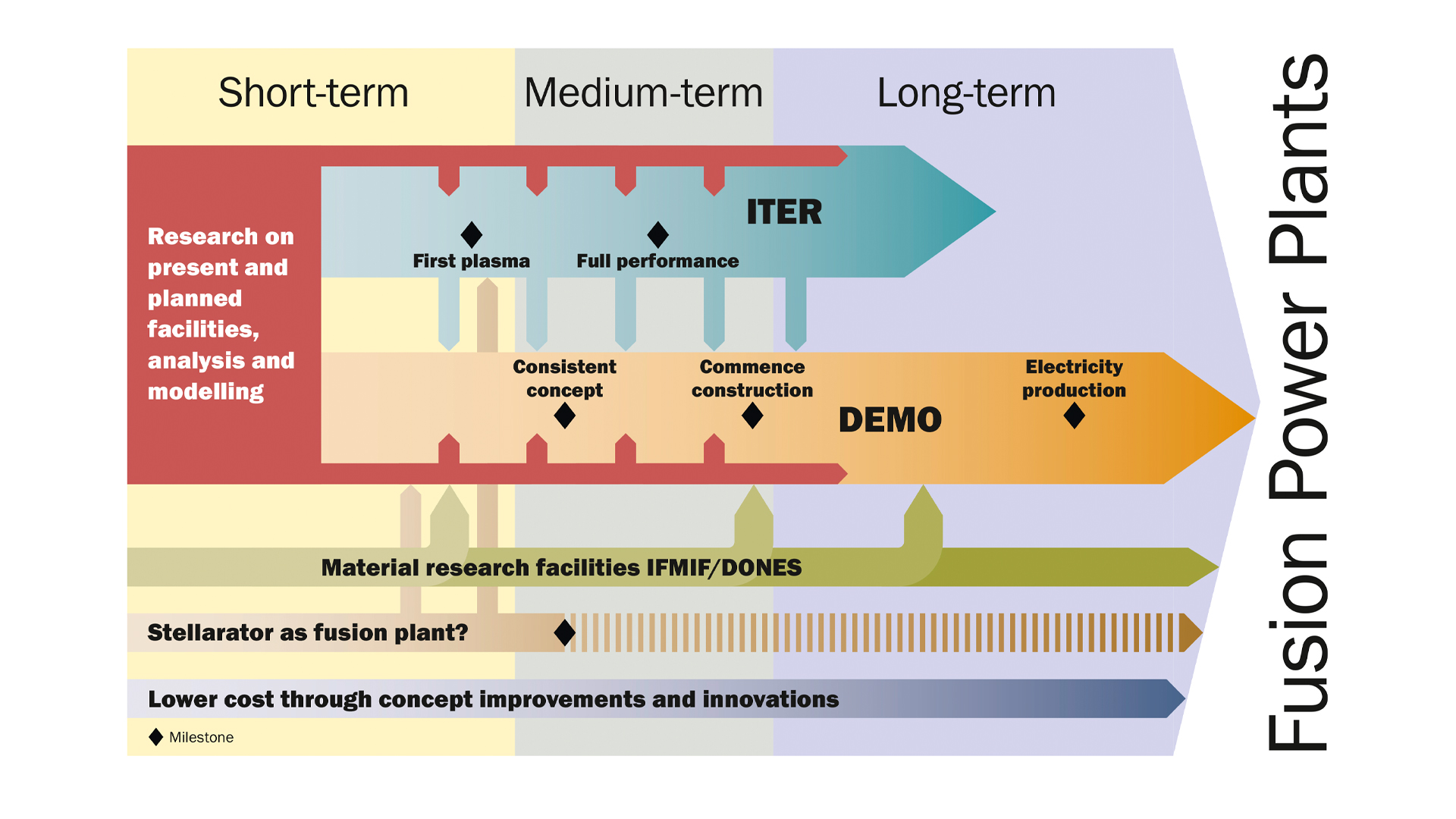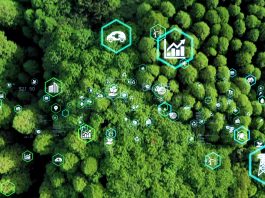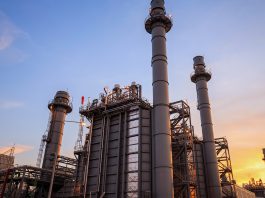Tony Donné, Programme Manager of EUROfusion, explores the progress made and the future objectives for nuclear fusion research in Europe.
As the principle of Einstein’s famous E=mc2 equation indicates, a fusion reaction happens when two light nuclei fuse to form a single heavier nucleus, which releases energy because the total mass of the resulting single nucleus is less than the mass of the two original nuclei. As global leaders seek to find greener and more sustainable energy solutions, the topic of nuclear fusion has been brought to the forefront of discussions around energy in recent years.
One European organisation helping to further research in the field of nuclear fusion and develop its further potential is the European Consortium for the Development of Fusion Energy (EUROfusion). Formed by research bodies from EU Member States in 2014, EUROfusion aims to cement European collaboration on fusion research by supporting and funding research projects aligned with the European Commission’s EURATOM Research and Training Programme (2021-2025).
EUROfusion’s mission is to pave the way for fusion power reactors. This is achieved by funding research based on the ‘European Roadmap to the Realisation of Fusion Energy’. The roadmap provides a clear and structured way forward to commercial electricity from fusion.
Several key devices are crucial to achieving the objectives of the EUROfusion programme. The flagship device of the European fusion programme is JET, the Joint European Torus, which is jointly used and financed by all European laboratories. JET was designed to study fusion in conditions approaching those needed for a power plant. It is the only experiment that can operate with the deuterium-tritium fuel mix that will be used for commercial fusion power. Aside from JET, EUROfusion has access to other experiments that contribute directly to the roadmap missions.
Alongside the work of EUROfusion lies ITER, the largest fusion experiment that is under construction in Cadarache, France. Once built, ITER will demonstrate the feasibility of fusion as the energy source of the future. ITER will be the first fusion device to maintain fusion for long periods of time, as well as being the first fusion device to test the integrated technologies, materials, and physics regimes necessary for the commercial production of fusion-based electricity.
Planned to be ITER’s successor, the DEMOnstration power plant (DEMO) is a firm component of EUROfusion’s programme. Required to produce between 300 MW to 500 MW net electricity, DEMO will hook fusion electricity to the grid. Laying the foundation for DEMO is the objective of the EUROfusion Fusion Technology Programme.
With a commitment to a greener world at the heart of its work, the consortium’s vision is to see fusion power plants feed the grid with CO2-free fusion power, as well as complementing other sources of energy production.
Tony Donné has been Programme Manager of the EUROfusion research consortium since June 2014. A trained physicist, Tony joined fusion research after obtaining his PhD in nuclear physics and has since devoted a substantial part of his scientific career to the design and use of plasma diagnostics at a large range of fusion devices. Innovation News Network spoke to Tony to find out more about the EUROfusion programme and its future goals.
Can you explain more about the EUROfusion programme and your key priorities currently?
EUROfusion is a consortium of 30 national research institutes from 28 European countries, made up of academics from around 150 universities, working collaboratively towards the goal of achieving electricity from fusion reactions.
A central document for EUROfusion is the fusion roadmap (Fig. 1), which displays a careful assessment of the further research needed to reach the final goal.
Two important devices on the fusion roadmap are the ITER and DEMO facilities. The ITER device will demonstrate, for the first time, that a fusion reactor is feasible. It will generate 500 MW of fusion power while using only 50 MW to heat the plasma. Whilst ITER will not generate electricity, it will test a number of key technologies. The DEMO device, on the other hand, will deliver electricity to the grid, with a target of generating 500 MW net electric power.
In Europe, ITER is being built by Fusion for Energy, and EUROfusion has no role in this. We are focussed on research which is currently carried out on many devices located across Europe to help optimise the ITER research plan and to guide the design of DEMO. The conceptual design of DEMO is fully in our control.
One of the large challenges for a fusion reactor (apart from tritium breeding which we plan to test in ITER) is the development of materials that can withstand the strong bombardments by neutrons from the fusion reaction. We are carrying out a significant amount of materials research to find more neutron-resistant materials. We must test them in a neutron spectrum that is similar to that in a fusion reactor. For this, we need a dedicated neutron source, IFMIF-DONES, which is planned to be built near Granada in Spain.
How do your activities align with the objectives of Horizon Europe?
Fusion electricity does not have any CO2 emissions and is a welcome element in our future energy mix, which should support the battle against climate change. Fusion is sustainable as the basic fuel elements (deuterium: heavy hydrogen or 2H) that we extract from natural water, and lithium that we extract from rocks or even from used car batteries, are available in large quantities and for thousands of years. Fusion is safe as there is no equivalent of a meltdown in a fission plant, meaning that the radioactive waste of a fusion reactor is short-lived (typically after about 100 years, the materials could be reprocessed).
In summary, our programme aligns well with the objective of Horizon Europe to tackle climate change and global challenges. Since we work closely with industry, the programme also promotes industrial competitiveness and innovation. We have a long list of spin-off technologies from fusion that have now led to large turnovers in other fields.
The programme has access to a series of devices, including its flagship device, JET, that aid in the achievement of the roadmap missions. Can you explain the magnitude of these devices in EUROfusion’s work and the role that innovation in technology has played since the launch of
the programme?
JET is the only truly European device, but next to it we make use of a number of national devices which include tokamaks (i.e. the same confinement concept as JET, ITER and DEMO); a stellarator (a device similar to the tokamak but in principle more stable and steady state); multiple linear devices that are mainly used to test the interaction between the hot plasma and the wall materials; and many specific technology facilities to test a large range of technologies we are working on. All these devices are very important. One of the major advances since EUROfusion was established is that we first define the priorities and then decide which device to use. Prior to EUROfusion, all devices were operated completely independently, which led to some gaps in research. Now, we have a much more balanced programme.
We are constantly working on improving technologies. Often, we do that in close contact with industries. We have a Fusion Technology Transfer Activity in which we transfer technologies developed in our research labs to industries that then regularly develop spin-offs in completely different fields.
EUROfusion’s vision is to achieve “a world in which fusion power plants feed the grid with CO2-free fusion power and complement other sources of energy production.” How are you making progress towards this vision?
We are making slow but steady progress. The funding from EUROfusion is based on a grant from the European Commission, which pays for 55% of our work, whilst the remaining 45% is the national matching funding brought in by the consortium partners. In the grant for Horizon 2020, we had – at the beginning – defined about 450 deliverables and around 100 milestones. To date, we have achieved 92% of the deliverables and 97% of the milestones, and we expect to have most of them completed by the end of the year. Although the Horizon 2020 programme ran from 2014 to 2020, with a two-year buffer period at the end, there have been some delays in the last two years because of COVID-19. Despite this, however, we will still deliver and we are making very steady progress. We are closely monitoring all deliverables and milestones to ensure that we keep track of our progress.
What will the recent Russian invasion on Ukraine and the consequent increase in already rising energy costs mean for your work and for fusion energy overall?
There are several significant impacts to consider.
Energy prices are continuing to climb, which implies that the operation of all fusion experimental devices will become more expensive and, in essence, we will achieve less with the same budget.
Ukraine is one of our members and I expect that, even after the war is over, science is low on the agenda when rebuilding the country. Although Ukraine is not one of our large partners, it provided very important contributions in some areas.
For some of our activities, we were working closely with Russia. For example, we were using the Russian fission reactor BOR60 for irradiating materials that we want to have tested for DEMO (IFMIF-DONES is not yet available and Europe does not have reactors with the same high flux as in BOR60). These contracts have now been suspended.
On the other hand, it will bring to the fore Europe’s high dependency on Russian imports of gas and oil and highlight the need to quickly diversify. Hopefully, it will bring nuclear back on the agenda and have a positive impact on the funding for fusion.
What are your plans for future work and your hopes for the future of nuclear fusion in general?
During the Horizon Europe period, we want to see ITER completed. This is largely out of our hands as it is the work of the ITER Organisation, Fusion for Energy (F4E) and the other six domestic agencies, but within EUROfusion we need to prepare for the exploitation of ITER. Additionally, we want to finish the conceptual design of DEMO towards the end of Horizon Europe. ITER and DEMO will, therefore, remain our focal points and many of our priorities are associated with these programmes.
Tony Donné
Programme Manager
EUROfusion
www.euro-fusion.org
https://www.linkedin.com/in/tony-donn%C3%A9-a0a518a/
https://www.facebook.com/fusion2050/
https://twitter.com/fusionincloseup?lang=en
Please note, this article will also appear in the tenth edition of our quarterly publication.











